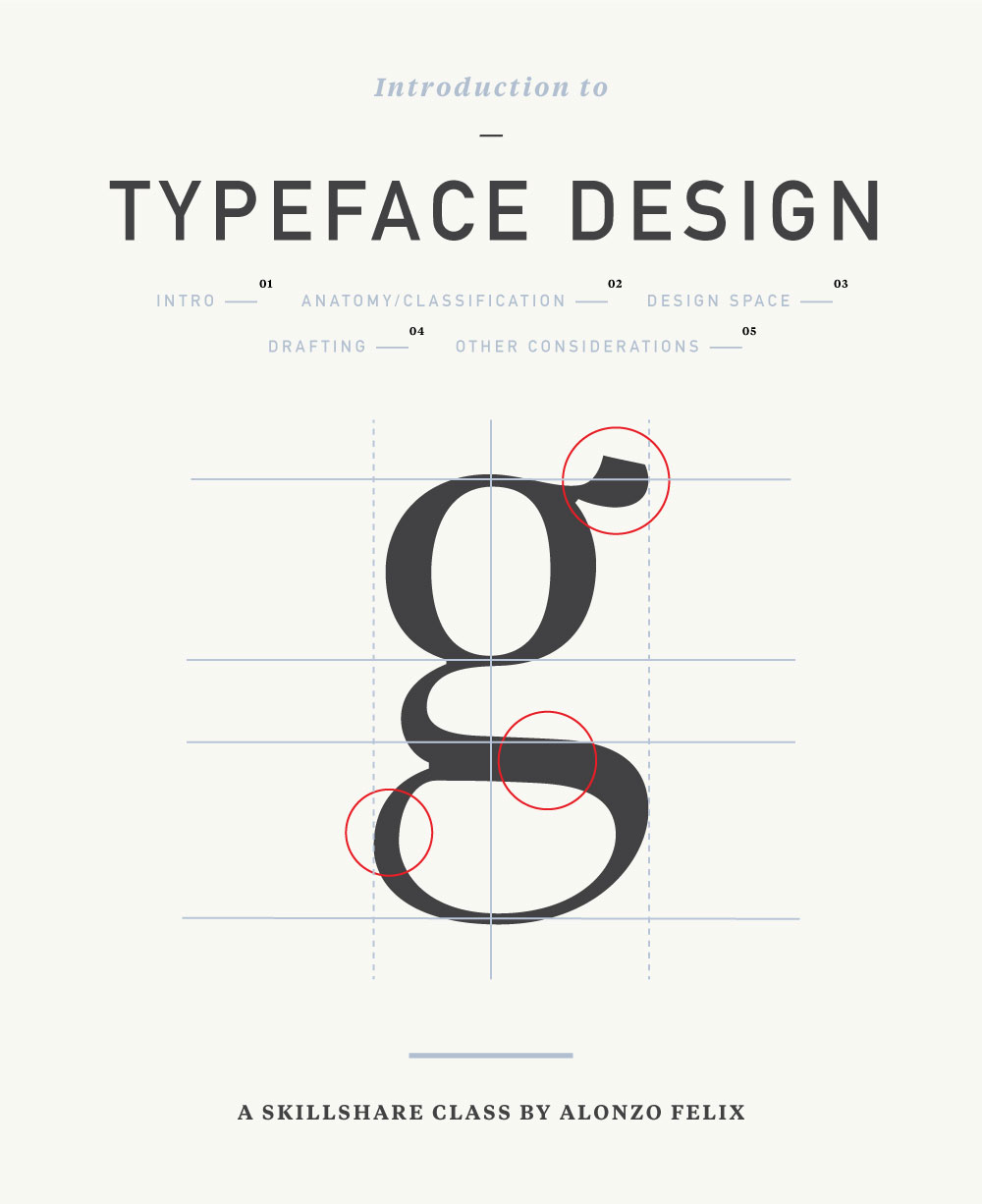Type is all around us. On the streets, on the web, in our homes and offices, and in our pockets. As the foundation of both web and print design, it's almost an understatement to say that typefaces play an important role in modern communications.

Typefaces, and more specifically letters, are the basic unit facilitating human communication. We'll take a closer look at letters themselves, how they came to be the way they are, and how new typefaces are created.
Typefaces are a vital part of a designer’s toolkit, yet the scope of creating a full type system–the volume of letters, numerals, punctuation, and symbols–has often intimidated young designers. Have you thought about where typefaces come from? Are you curious about how typefaces are designed? This one is for you.
I've dedicated a significant part of my career to learning more about creating and working with type and I'm happy to help you discover the power of working with type in greater detail.
This class is an accessible, paced, and exciting introduction to the world of typeface design. Each unit builds on the next, carefully introducing principles, examples, and project steps that empower you in both a conceptual understanding of type and real-world type skills.

What You'll Learn
You'll learn some of the fundamentals of the typeface design process that will help you better articulate the nuances of type, strengthening your on-the-job vocabulary and creative toolset.
Curious beginners will feel at home in this class. Designers, writers, editors, and anyone working with words will benefit most, but the class is open to all with a serious interest in hands-on type skills. Note: background knowledge in typeface design is useful but not necessary.
The class is divided into a series of progressive units.
- Introduction to Type Design. Learn how and why we still need more typefaces, what a typeface is, and what distinguishes typefaces from fonts, lettering, and calligraphy. You'll be able to articulate those distinctions.

